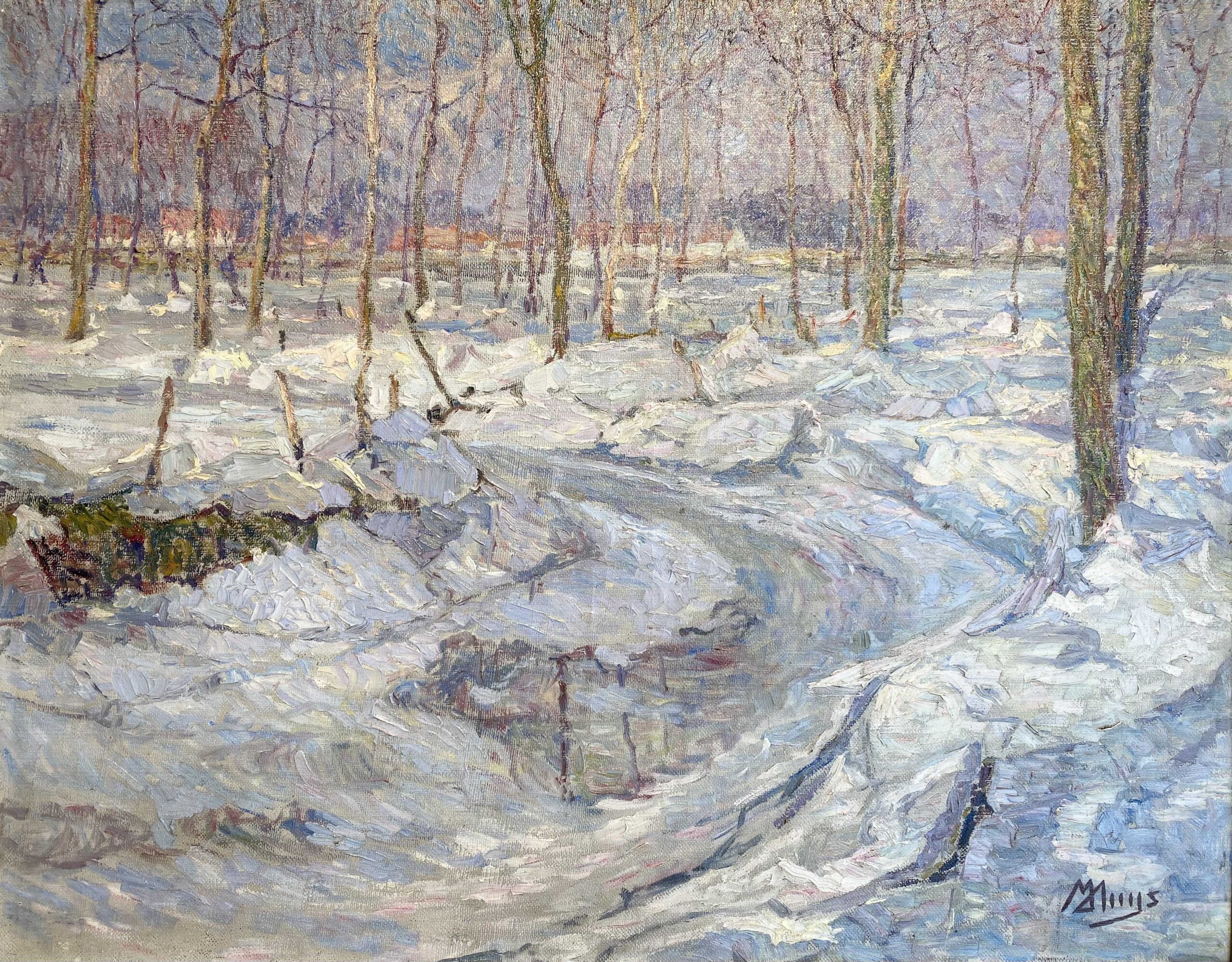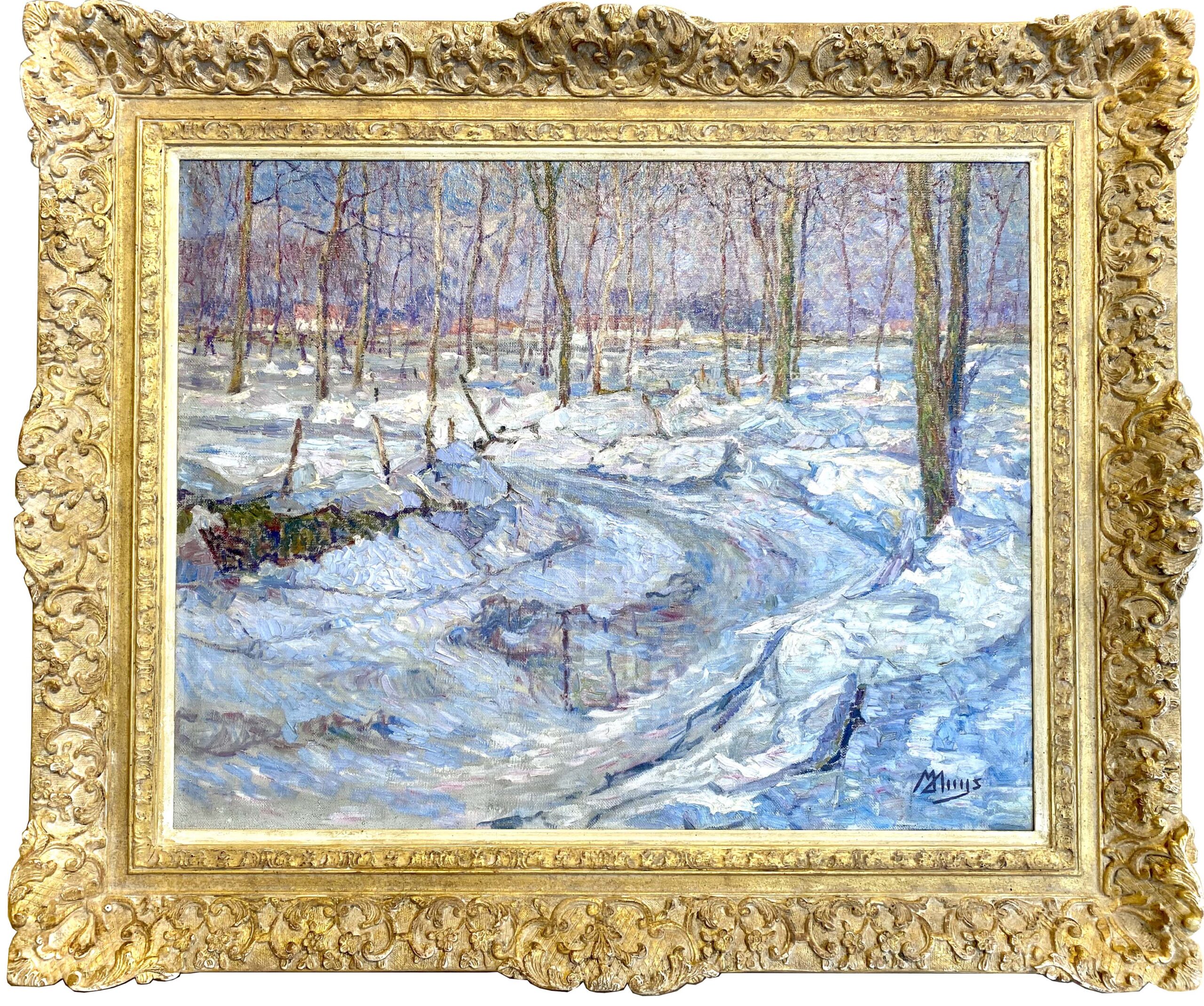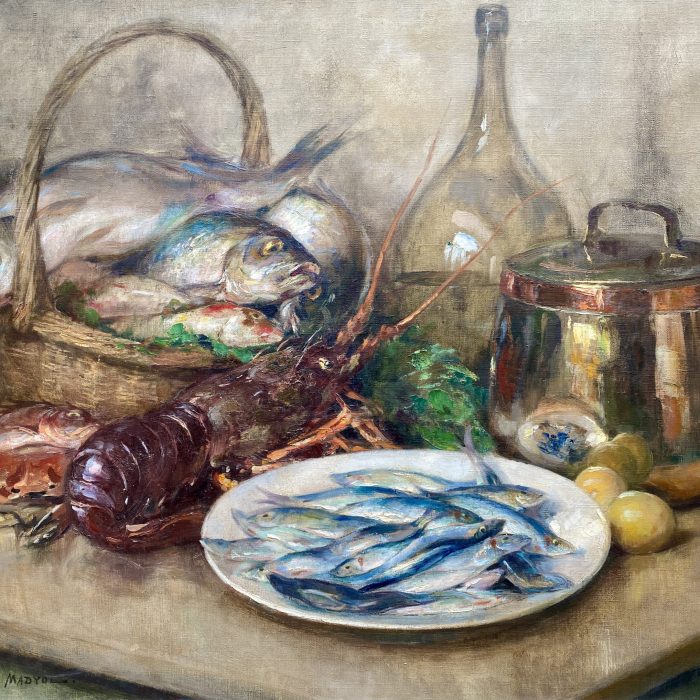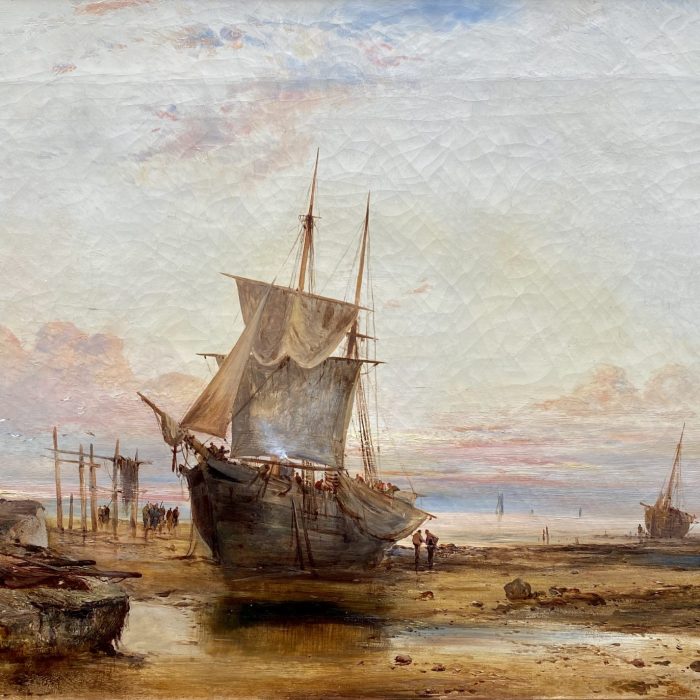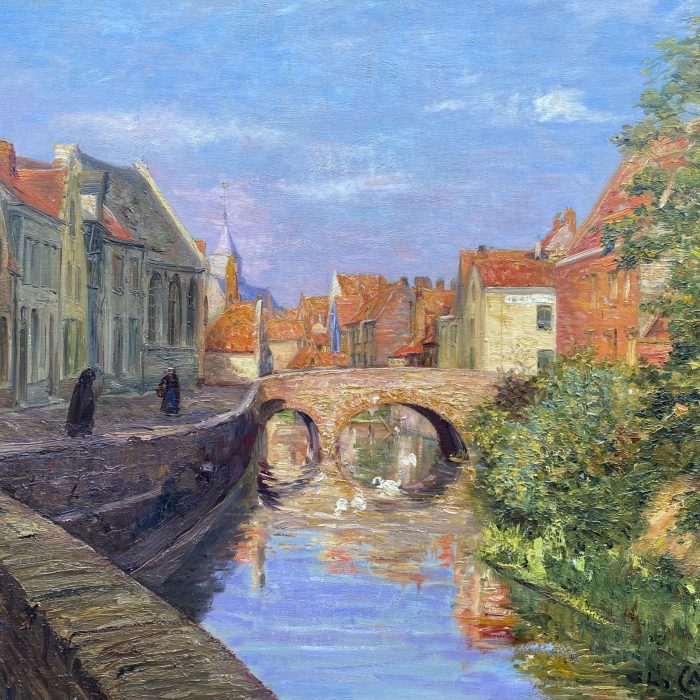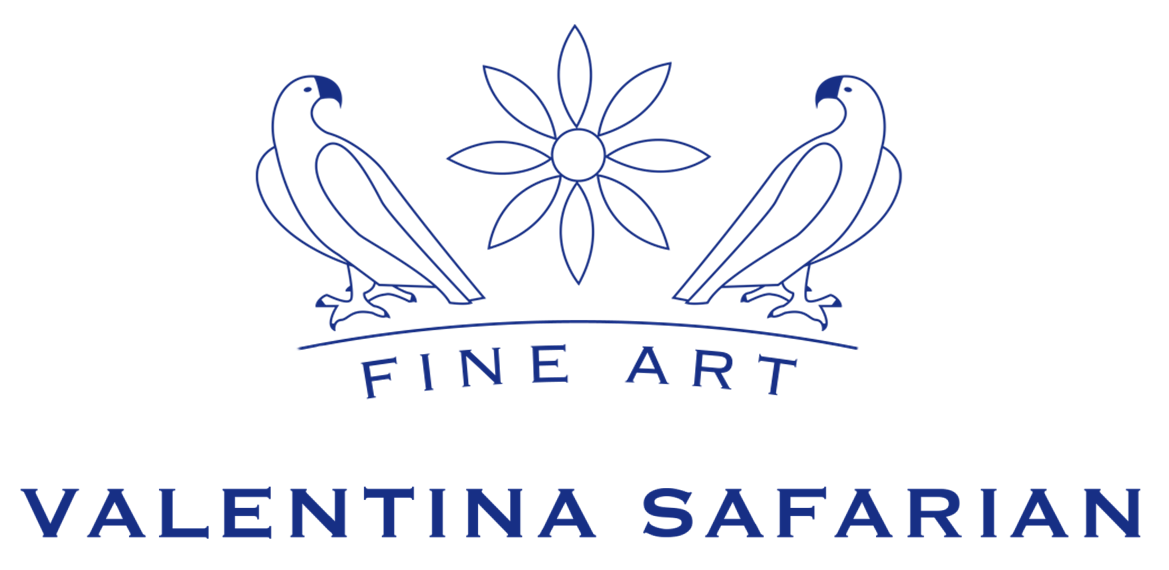Olsene 1874 – 1932 Zulte
Flemish Impressionist and Luminist Painter
Winter Silence in Waregem
Modest Huys (25 October 1874 – 30 January 1932) was a Flemish impressionist and luminist painter, widely regarded as one of the leading Belgian artists of the early 20th century. His luminous landscapes, rural scenes, and portraits capture the spirit of the Leie region and the essence of everyday Flemish life.
From a young age, Huys worked in his father’s painting and decorating business and studied at the Gentse Nijverheidschool (Ghent Industrial School). Around 1891–1892, he met Emile Claus, whose encouragement inspired him to pursue painting professionally. In 1900, he enrolled at the Royal Academy of Fine Arts in Antwerp, studying under Eugène Joors and Frans Van Leemputten, though he never completed his studies. During this time, he became close friends with the celebrated author Stijn Streuvels, with whom he maintained a lifelong friendship.
Huys made his public debut in 1902 at the Sint-Lucasgilde in Kortrijk and soon exhibited throughout Belgium. He spent long periods in Meetjesland, painting luminous landscapes inspired by rural life. From 1905, he took part in the exhibitions of Vie et Lumière, alongside Emile Claus, James Ensor, Jenny Montigny, and other leading Belgian luminists.
In 1909, after marrying Hélène Sonck, he settled near Waregem in the “Rozenhuis.” The outbreak of World War I forced him to flee to the Netherlands, though he returned to Belgium in 1915. His home and studio were destroyed in 1918, after which he lived for a time in Brakel. Following the war, he painted a series of haunting works depicting the devastation of the front and settled in Wakken in 1919.
During the interwar years, Huys gained international recognition, exhibiting at the Paris Salon, the Carnegie Institute in Pittsburgh, and numerous Belgian venues including Kortrijk, Ghent, Bruges, Antwerp, and De Panne. His early luminous palette gradually evolved into a more expressive style with deeper tones and stronger contrasts, occasionally approaching expressionism yet retaining his distinct poetic touch.
In 1926, he completed his ideal home and studio, the “Zonnehuys” (Sun House), on the banks of the Leie in Zulte, where he continued to paint until his death in 1932.
Huys is celebrated for his depictions of the Flemish countryside — harvest scenes, village fairs, flax workers, processions, and portraits of notable figures such as Stijn Streuvels, Hugo Verriest, and René De Clercq. Although deeply influenced by Emile Claus, he developed a personal style marked by a warm light, vibrant brushwork, and a deep empathy for rural life.
Today, Modest Huys’s paintings are highly sought after by collectors, achieving significant results at auction — notably Waterratten (1921), sold at Bernaerts Auctioneers in Antwerp in 2003 for €104,460. His works are represented in numerous museums and public collections, including:Museum of Deinze and the Leie Region; Royal Museums of Fine Arts of Belgium, Brussels; Groeningemuseum, Bruges; Museum of Fine Arts, Antwerp; Museums in Essen, Munich, London, Paris, New York, New Orleans, Pittsburgh, and Zürich.
A key figure of Flemish luminism, Modest Huys remains one of Belgium’s most cherished interpreters of light, atmosphere, and rural life.

